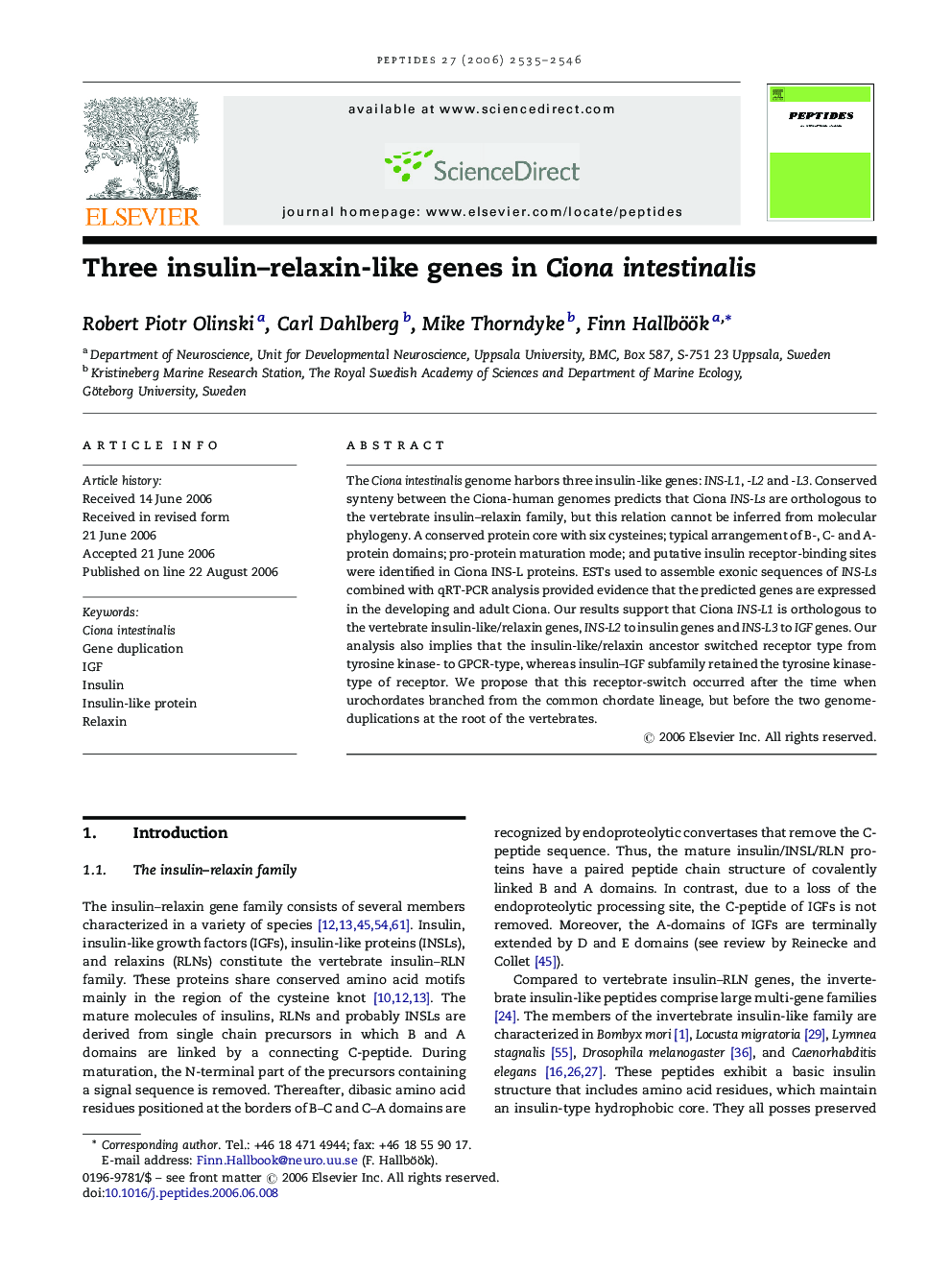| Article ID | Journal | Published Year | Pages | File Type |
|---|---|---|---|---|
| 2007804 | Peptides | 2006 | 12 Pages |
The Ciona intestinalis genome harbors three insulin-like genes: INS-L1, -L2 and -L3. Conserved synteny between the Ciona-human genomes predicts that Ciona INS-Ls are orthologous to the vertebrate insulin–relaxin family, but this relation cannot be inferred from molecular phylogeny. A conserved protein core with six cysteines; typical arrangement of B-, C- and A-protein domains; pro-protein maturation mode; and putative insulin receptor-binding sites were identified in Ciona INS-L proteins. ESTs used to assemble exonic sequences of INS-Ls combined with qRT-PCR analysis provided evidence that the predicted genes are expressed in the developing and adult Ciona. Our results support that Ciona INS-L1 is orthologous to the vertebrate insulin-like/relaxin genes, INS-L2 to insulin genes and INS-L3 to IGF genes. Our analysis also implies that the insulin-like/relaxin ancestor switched receptor type from tyrosine kinase- to GPCR-type, whereas insulin–IGF subfamily retained the tyrosine kinase-type of receptor. We propose that this receptor-switch occurred after the time when urochordates branched from the common chordate lineage, but before the two genome-duplications at the root of the vertebrates.
